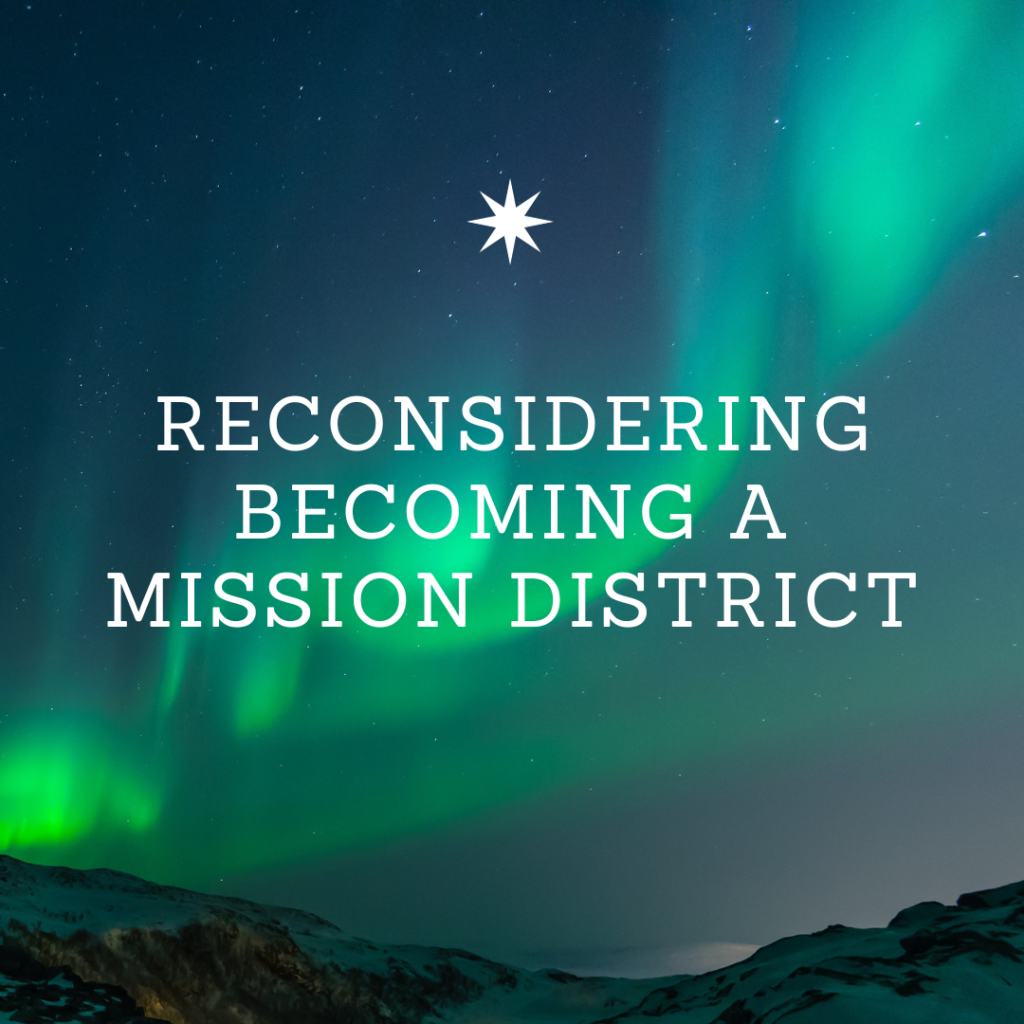
Continuing our series on our reconsideration of becoming a Mission District of the Pacific Northwest Conference of The United Methodist Church, I’d like to offer my perspective as a former member of the Mission District Task Force, a current member of the Leadership Team, and a member of the LGBTQ community.
We’ve already heard about the work that the Mission District Task Force has undertaken to hone in on our conference values. And we’ve heard from our Leadership Team chair about the thoughtfulness with which we’ve considered the changing financial and administrative landscape of The United Methodist Church. I echo the sentiments of my colleagues who wrote those perspectives.
I’d like to offer a look at what the emotions were felt in the aftermath of the Special Session of General Conference in 2019 and how that’s changed.
When the General Conference passed the Traditional Plan, I wept both tears of sadness and anger for a church that felt like it was betraying the very values that had drawn me to it. That decision threw the Alaska Annual Conference into a whirlwind of uncertainty. As a Missionary Conference, we’re beholden to the wider church in a way that other Annual Conferences aren’t, both financially and structurally. At that time, our decision to pursue joining the PNW was seen by myself as a life raft; a way for Alaska to preserve our values and our connection as United Methodists. When it looked like the worldwide church was in imminent danger of becoming an institution not safe for LGBTQ people, our strong partnerships and shared values with the PNW was a beacon of hope. It meant that we Alaskans could forge a future with the PNW, leading with love.
The pandemic gave us a time to pause and reflect on our decisions. I do believe the work carried out by the Mission District Task Force was vital for our annual conference and I recognize that the promise of partnership with PNW gave me the hope to remain part of the United Methodist Church. However, we are in a much different place now.
After GC2019, a wave of progressive and centrist delegates were elected across the connection. This changed the calculus of what future General Conferences could mean for LGBTQ people. In the end it was traditionalist churches that disaffiliated en masse, not inclusive ones. The Western Jurisdiction acted prophetically in continuing to ordain queer clergy and bless same sex marriages. And now, here in the Greater Northwest we get to carry out our ministry under the leadership of The UMC’s first out, married gay bishop. Bishop Cedrick is certainly more than that, but nonetheless those identifiers are a visible sign of the change that the Holy Spirit is stirring in the church.
After a season of fear and apprehension I can now say with confidence that I feel great hope for The United Methodist Church. If at some point it is necessary to join forces with the PNW we will still have that option. But for now, we need not act out of the fear we felt after GC2019. I look forward to the Special Called Session to discuss these ideas more fully with the Alaska Annual Conference, and I strongly urge our members to reconsider our decision to join the PNW as a Mission District.
From Tyler Watson

Thank you for sharing your perspective. I am glad to see the Alaska Conference remaining more independent, while still connected to the United Methodist Church. A reading of history indicates that becoming a district of the Pacific Northwest Conference would be a step backwards, in my opinion.
LikeLike